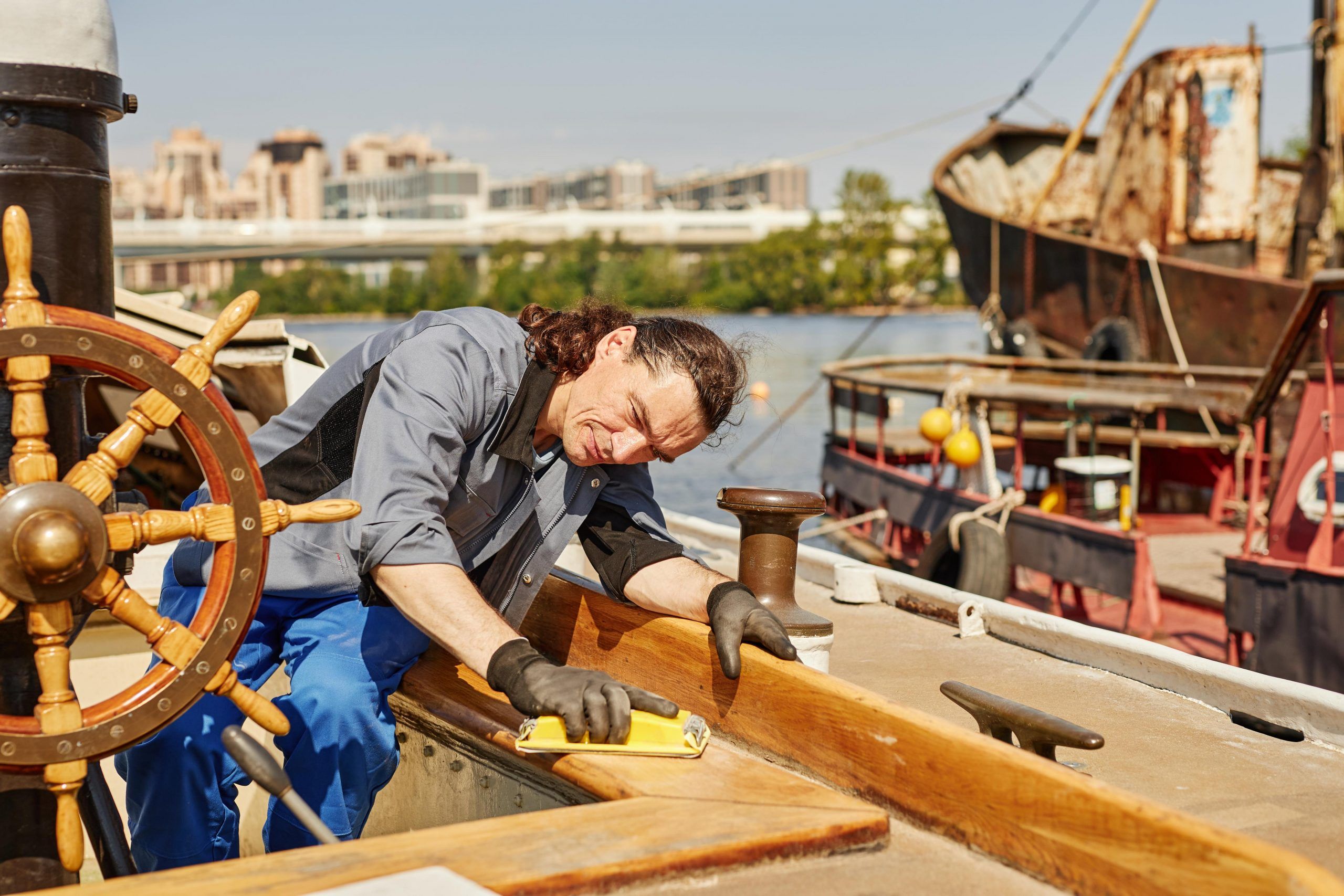Spring Cleaning Your Boat: A Complete Guide to Cleaning, Inspecting & Prepping for the Season
Spring cleaning your boat isn’t just about looks—it’s key to safety, performance, and longevity.
March 26, 2025
As the days grow longer and the water calls your name, it’s time to shake off the winter dust and get your boat ready for a new season. Spring cleaning your boat isn’t just about aesthetics—it’s essential for safety, performance, and longevity. A well-maintained boat not only looks better but also operates more efficiently and reduces the risk of mechanical failures. This guide covers everything from cleaning and inspecting different materials to maintaining critical components like metal fittings, rudders, and anodes.
Step 1: Exterior Cleaning, Inspection & Protection
Hull & Deck Maintenance
- Wash the Hull & Deck: Use a marine-safe soap to remove dirt, grime, and salt buildup. For tough stains, a non-abrasive cleaner can help. A pressure washer can be useful but should be used with care to avoid damaging delicate surfaces.
- Assess for Damage: Check for cracks, blisters, or gel coat issues. Small cracks can worsen over time, so address them promptly.
- Wax & Polish: Applying a fresh coat of wax protects the gel coat from UV damage and makes future cleaning easier. Consider using a non-skid deck treatment to improve traction.
- Bottom Paint Check: If your boat stays in the water, inspect the antifouling paint for wear and touch it up as needed to prevent marine growth.
Wood Care & Varnishing
- Check Wooden Parts: If your boat has teak, mahogany, or oak elements, look for signs of wear, rot, or damage.
- Clean & Sand: Use a mild teak cleaner for teak surfaces. Sand any rough or peeling areas before refinishing.
- Apply Varnish or Oil: Depending on the type of wood, apply multiple coats of marine varnish for a glossy protective finish or teak oil for a more natural look.
- Seal & Protect: Ensure wooden areas are well-sealed to prevent water intrusion and UV damage.

Above: Sailor cleaning boat. Photo via Pond5.
Metal Components & Corrosion Prevention
- Clean & Protect Metal Parts: Stainless steel and aluminum fittings should be rinsed and polished with a corrosion-resistant product. Focus on railings, cleats, hinges, and screws.
- Inspect & Replace Anodes: Sacrificial anodes protect your boat’s metal components from galvanic corrosion. Check zinc, aluminum, or magnesium anodes and replace any that are more than 50% corroded.
- Rudder & Propeller: Look for signs of pitting, corrosion, or damage. Polish and apply a protective coating if needed.
Step 2: Interior Deep Clean & Safety Check
General Cleaning
- Vacuum & Scrub: Remove dust, dirt, and mildew from seats, floors, and walls.
- Upholstery & Canvas: Inspect seats, cushions, and Bimini tops for mold or tears. Clean with a fabric-safe mold remover and allow everything to dry completely.
- Sanitize the Galley & Head: Use marine-safe disinfectant on countertops, sinks, and toilets. Empty and sanitize the refrigerator and storage compartments.
Safety Equipment Review
- Life Jackets & Fire Extinguishers: Ensure all safety gear is in good condition and replace expired items.
- Storage Areas: Monitor for moisture, pests, or mildew in lockers. Use moisture absorbers to prevent mold growth.
Step 3: Engine, Mechanical & Electrical System Checks
- Check the Engine: Look for leaks, worn belts, and cracked hoses. Address any unusual wear or signs of potential failure.
- Oil & Filters: Change engine oil, fuel filters, and transmission fluid if needed.
- Battery & Electrical System: Clean battery terminals, check charge levels, and test all electrical components.
- Bilge Pump & Drainage Systems: Ensure proper operation and check for debris.
- Steering & Throttle Controls: Lubricate cables and ensure smooth movement.

Above: person cleaning boat. Photo via Pexels.
Step 4: Fuel, Plumbing & Propulsion Systems
- Fuel Lines & Connections: Look for cracks, leaks, or loose fittings. Ethanol-based fuel can degrade hoses, so replace worn ones.
- Water System Maintenance: Flush and sanitize freshwater tanks. Inspect for leaks.
- Propane & Gas Systems: Check for leaks and ensure proper ventilation.
- Refuel & Add Stabilizer: If your fuel has been sitting over the winter, add a stabilizer to improve performance.
Step 5: Final Touches & Readiness Check
- Test Navigation & Electronics: Verify GPS, VHF radio, lights, and other electronic devices.
- Examine Anchors & Lines: Check for fraying, wear, or corrosion.
- Update Registration & Documentation: Ensure everything is current and keep copies on board.
- Stock Up on Essentials: Replenish emergency supplies and spare parts.
- Conduct a Safety Drill: Review emergency procedures with passengers.
By following these steps, your boat will be clean, safe, and ready for a fantastic season on the water. Taking the time to perform these checks now can prevent costly repairs, extend the life of your vessel, and ensure smooth sailing all year long. So grab your cleaning supplies, roll up your sleeves, and get ready to enjoy a worry-free boating season! Happy boating!
Editor's note: This article was previously published in February of 2001 and was last updated in March of 2025.












